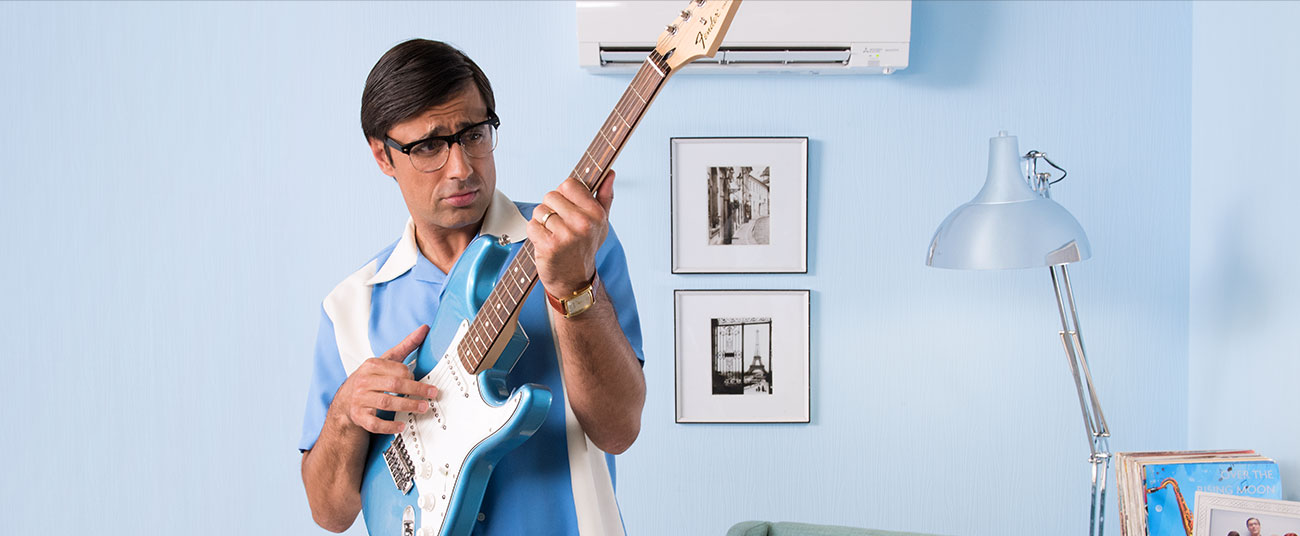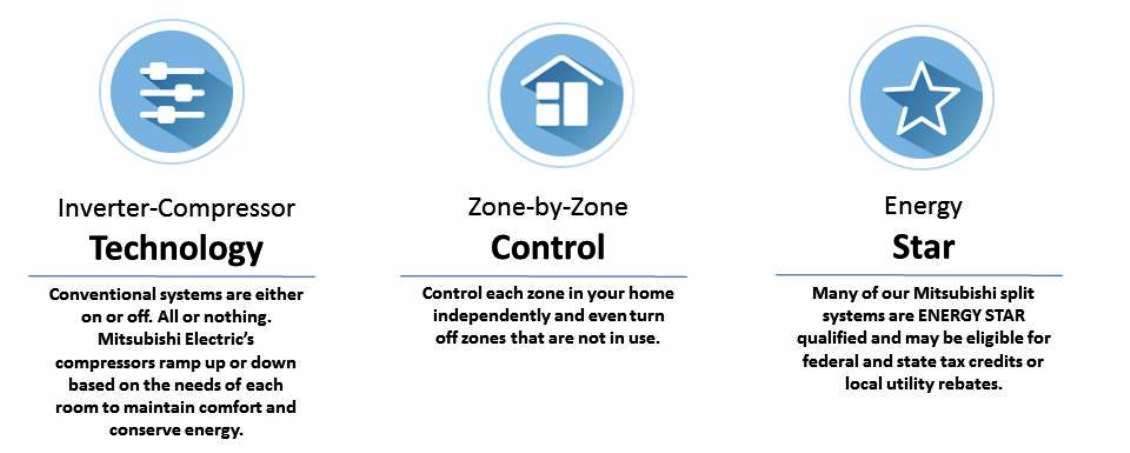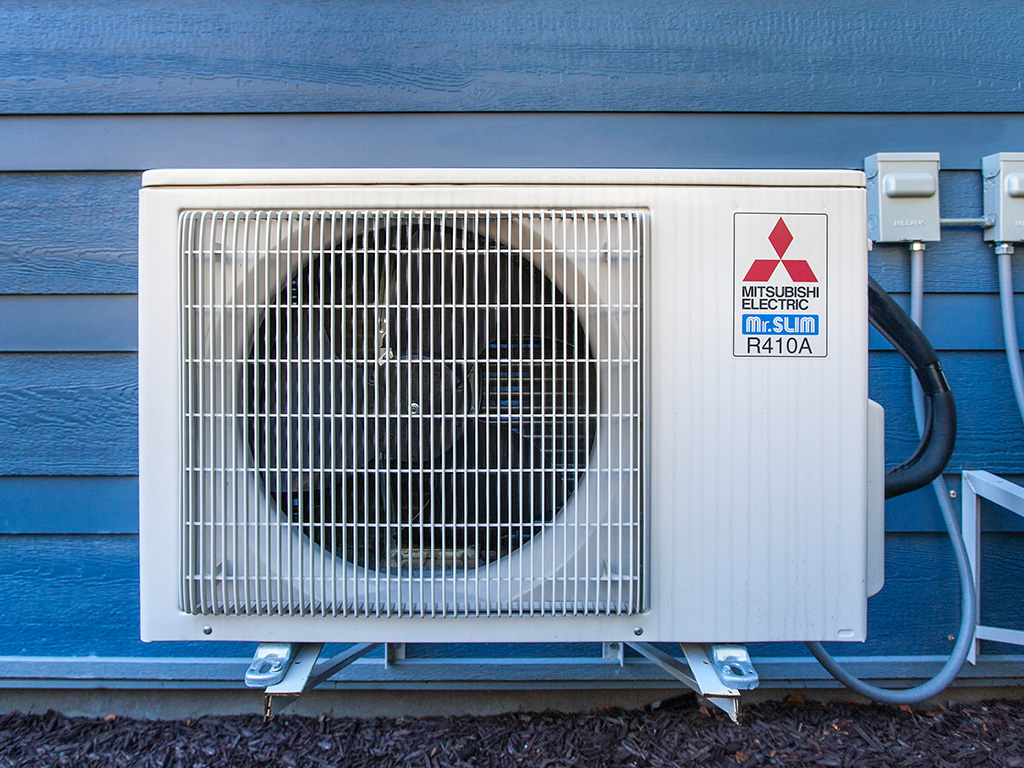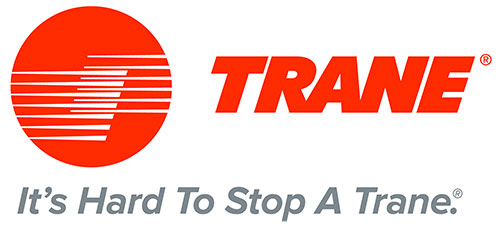Reduce Energy Usage, Not Comfort
With Mitsubishi’s advanced technology that is more efficient than traditional systems


Mitsubishi Inverter Technology

Mitsubishi Electric’s innovative INVERTER-driven compressor technology uses only the energy it needs to cool or heat your space. Your system smoothly responds to changes in indoor and outdoor temperatures to precisely control your comfort. This is unlike conventional systems that turn fully on and off with a bang. Not only can you maintain a consistently comfortable temperature, you can also lower your next energy bill.
Individual units allow you to regulate temperatures in the spaces you use. A toasty warm family room in winter; a fully air-conditioned sunroom in the summer; a functional basement or garage all year long. By optimizing the temperature in selected zones, you can achieve the level of comfort you want while decreasing energy consumption.
Traditional cooling and heating solutions are a bit slow on the uptake, blasting freezing-cold air one minute and then nothing the next. So, what gives? Temperature delivery should be more streamlined with less temperature swings. That’s where INVERTER technology comes in.
Part of the ductless compressor unit, INVERTER technology selectively changes the motor speed according to home temperature demands. This variable compression speed means a smoother, more streamlined approach to temperature delivery that’s also lighter on the pocketbook.
Total Comfort Control
Traditional systems use a fixed-speed compressor, which cycles the unit on and off whenever the room dips below desired temperatures. This system relies on an all-or-nothing philosophy—with the compressor running at either zero or 100 percent. This can lead to unpleasant temperature swings as the system strains to maintain a constant temperature.
Inverters, on the other hand, are always running in the background, adjusting the compressor speed in real time. By ramping up power to the compressor when needed, an inverter provides a more accurate, on-demand approach to temperature control. If your room temperature’s already a comfortable 72 degrees, for example, an inverter may slow the compressor’s engine to a crawl. If your room’s cooking at 104 degrees, the inverter will push the compressor into high gear, keeping you out of the hot seat.
Dialing In Efficiency & Savings
Room Size
The size of your air conditioner impacts your energy bill more than you might think. Standard, fixed-speed air conditioners will run at peak power, regardless of the size of your room—whether it’s 1000, 2000, or 10,000 square feet. Bigger is not necessarily better in this case—especially if you have a smaller room.
INVERTER-driven units, on the other hand, are able to dynamically adjust their compressor speed based on a room’s temperature. Because the unit only draws enough power to maintain a steady room temperature, via the compressor, it “changes” its capacity to suit the room it’s in.
Start-up Current
From an energy perspective, constantly cycling a compressor on and off can be a costly endeavor. Unlike INVERTER-driven systems, fixed-speed compressors can’t ramp up gradually. While INVERTER systems are always on, running at a fraction of full speed is far more efficient in the long run. It’s estimated that standard systems draw 3-4 times as much power on start-up versus an INVERTER-driven system.
Takeaway
Inverters work overtime to deliver personalized comfort and energy efficiency. With smooth, streamlined temperature delivery without dramatic swings, inverters are the high end of the cooling and heating world. With INVERTER technology, the dream just got a little bit closer.
This article and its content are sponsored by Mitsubishi Electric US Inc., Cooling & Heating Division.





Follow Us!